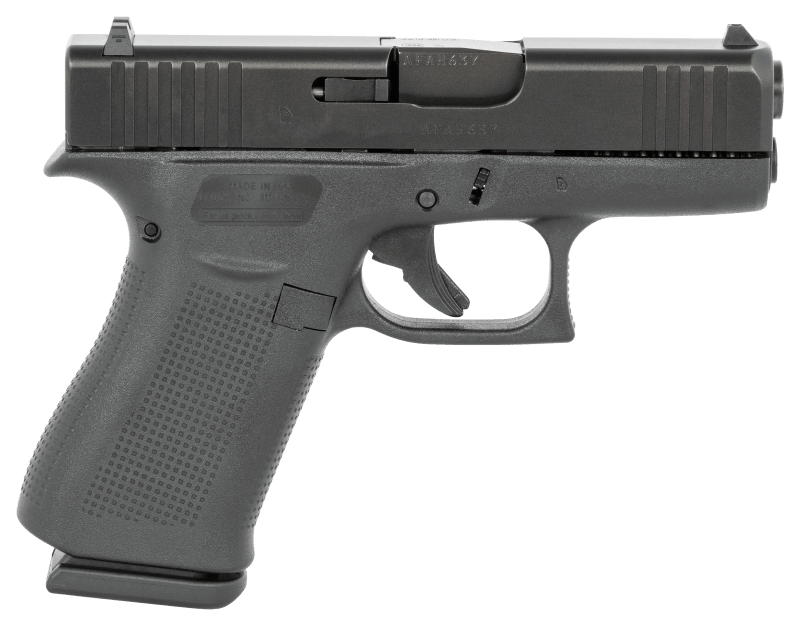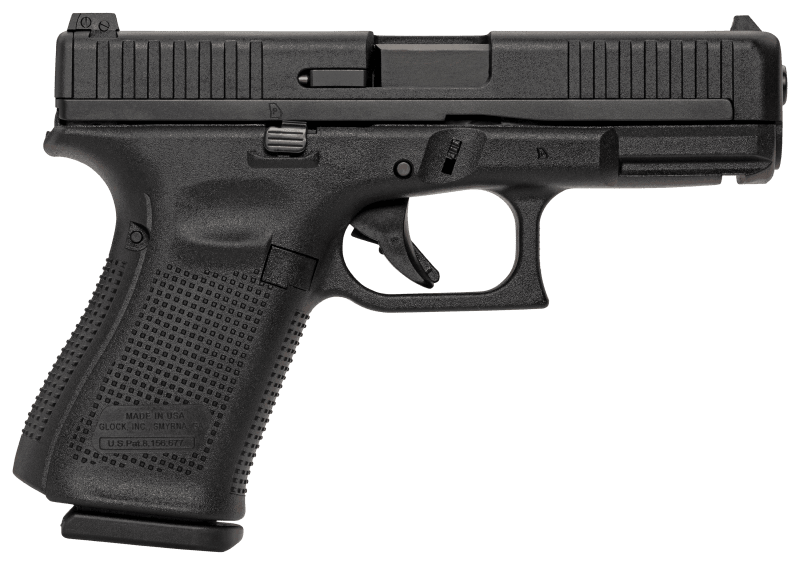When it comes to customizing a Glock pistol, the decision to add a scope or optics is one that can significantly alter the shooting experience. While the integration of modern sighting aids like scopes and red dot sights can offer marked improvements in accuracy, target acquisition speed, and visibility in challenging light conditions, there are compelling reasons to maintain the original iron sights. This choice hinges on a balance between the technological enhancements that optics provide and the fundamental reliability, durability, and simplicity that come with the standard iron sights. Whether a shooter values the high-tech advantages of optics or the unadorned efficiency of iron sights, the decision ultimately shapes both the functionality and the character of their Glock. Here's a breakdown of the potential advantages and disadvantages:
Benefits of Attaching a Scope or Optics to a Glock:
- Improved Accuracy: The precision of a well-mounted scope or red dot sight on a Glock can significantly tighten groupings on the target. This is because such optics provide a clearer point of aim and eliminate much of the guesswork associated with lining up iron sights. Especially at distances beyond the typical engagement range for a handgun, an optic can make the difference between a hit and a miss, as it magnifies the target and provides a clearer sight picture.
- Faster Target Acquisition: With a red dot sight, the shooter's eye is drawn naturally to the illuminated dot, which appears directly on the target. This streamlined sighting method reduces the time it takes to aim, enabling the shooter to react more swiftly in dynamic shooting scenarios. The simplicity of placing a single dot on the target, rather than aligning multiple sights, can shave precious milliseconds off the shooter's response time, which is vital in competitive shooting or defensive situations.
- Better Low-Light Visibility: In dimly lit environments where iron sights may become nearly invisible, an optic with an illuminated reticle can be a game-changer. The bright reticle stands out against the backdrop, ensuring that the shooter's aim is not compromised by the lack of light. This feature not only enhances accuracy in low-light conditions but also boosts the shooter's confidence in their ability to hit the target, regardless of the lighting.
- Ease of Use for Those with Vision Problems: For shooters with vision impairments that affect focus, a red dot sight can alleviate the challenge of quickly shifting focus between the target, the front sight, and the rear sight. By presenting a single focal plane, red dot sights enable these individuals to maintain their effectiveness with the firearm, ensuring that visual limitations don't hinder their shooting performance or enjoyment.
- Enhanced Shooting Experience: The use of an optic can transform the shooting experience, making it more accessible and engaging for novices and seasoned marksmen alike. The clear point of aim provided by a scope or red dot sight can instill greater confidence in one's shooting abilities, encouraging shooters to practice more frequently and with greater enthusiasm. This positive feedback loop often results in improved skills and a deeper appreciation for the sport of shooting.

GLOCK G43X Semi-Auto Pistol
The GLOCK G43X Semi-Auto Pistol has been designed with both a comfortable shooting and conceal-carry experience in mind. While carrying this subcompact design, the compact, Slimline frame feels great in any holster. Its compact grip length, built-in beaver tail, and subcompact-slim slide deliver a balanced, versatile feel while shooting, one that's great for a variety of users.

GLOCK G44 Compact Semi-Auto Pistol
The innovative design of the GLOCK G44 Compact Semi-Auto Pistol is GLOCK's first hybrid steel-polymer slide chambered for the .22-cal. round. This gives it a naturally low recoil for total control and easier follow-up shots. With its compact design and backstrap adaptability, it's perfect for almost any hand size.
Benefits of Not Using Optics for a Glock:
Simplicity: The inherent simplicity of iron sights aligns with the "less is more" philosophy, providing a reliable method of aiming that is not susceptible to the technical mishaps that can afflict electronic optics. With iron sights, a shooter never needs to worry about a dead battery or a malfunctioning circuit at a critical moment. This robustness is particularly valued in situations where dependability is paramount, such as in law enforcement or self-defense scenarios.
Durability: The legendary toughness of Glock pistols is partly attributed to their minimalistic design, which iron sights complement perfectly. Without the addition of a scope, a Glock remains as steadfast as it was engineered to be, able to endure drops, dirt, and inclement weather without the risk of damaging more delicate optical components. This unaltered state assures the owner that their firearm will function as expected, even under extreme conditions.
Cost Savings: Opting to stick with the factory iron sights on a Glock avoids the financial outlay associated with higher-end optics, which can sometimes cost as much as the firearm itself. In addition to the initial investment, there's also the potential need for extra accessories or machining work to properly mount an optic, which further inflates the overall expense. For budget-conscious shooters, relying on iron sights can make the difference between a feasible and an unaffordable upgrade.
Concealability: The slim profile of a Glock is a key factor in its concealability, a trait that is compromised when adding a scope or red dot sight. The added bulk can create a more pronounced print when concealed, potentially drawing unwanted attention or making it more challenging to draw the firearm discreetly from concealment. For those who carry concealed regularly, the sleek form factor of a Glock with iron sights is a clear advantage.
Training and Skill Development: Mastering iron sights demands a disciplined approach to the fundamentals of marksmanship. Shooters who train with iron sights often develop a meticulous attention to detail, from breath control to sight alignment and sight picture. This foundational skill set is transferable to any firearm and serves as a testament to a shooter's dedication to the craft, regardless of the advancements in sighting technology.
Weight: Every ounce matters when it comes to firearm ergonomics and handling, particularly for a weapon that might be carried on one's person for extended periods. By forgoing the addition of a scope or red dot sight, the Glock retains its original weight, ensuring that the balance and heft of the firearm remain unaltered. This consideration is crucial for those who value quick maneuverability and ease of carry, whether for competitive shooting or personal defense.
Ultimately, the decision to attach a scope or optics to a Glock—or to refrain from doing so—depends on the shooter's personal preferences, needs, and the intended use of the firearm. Some shooters might benefit greatly from the use of optics, while others may prefer the traditional approach of using iron sights.
- 3222 views

